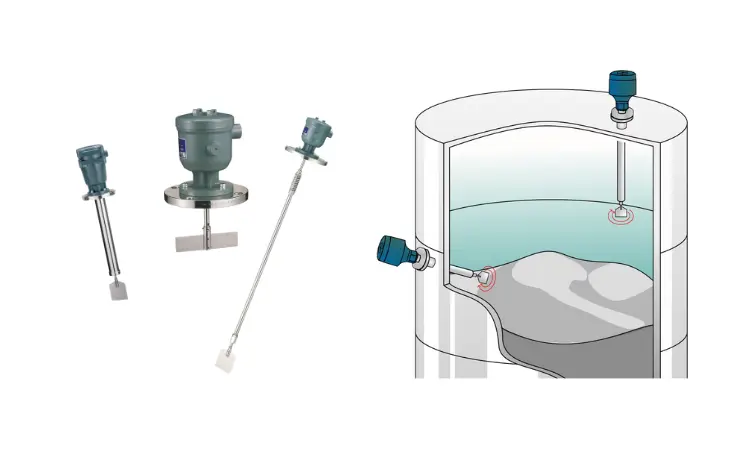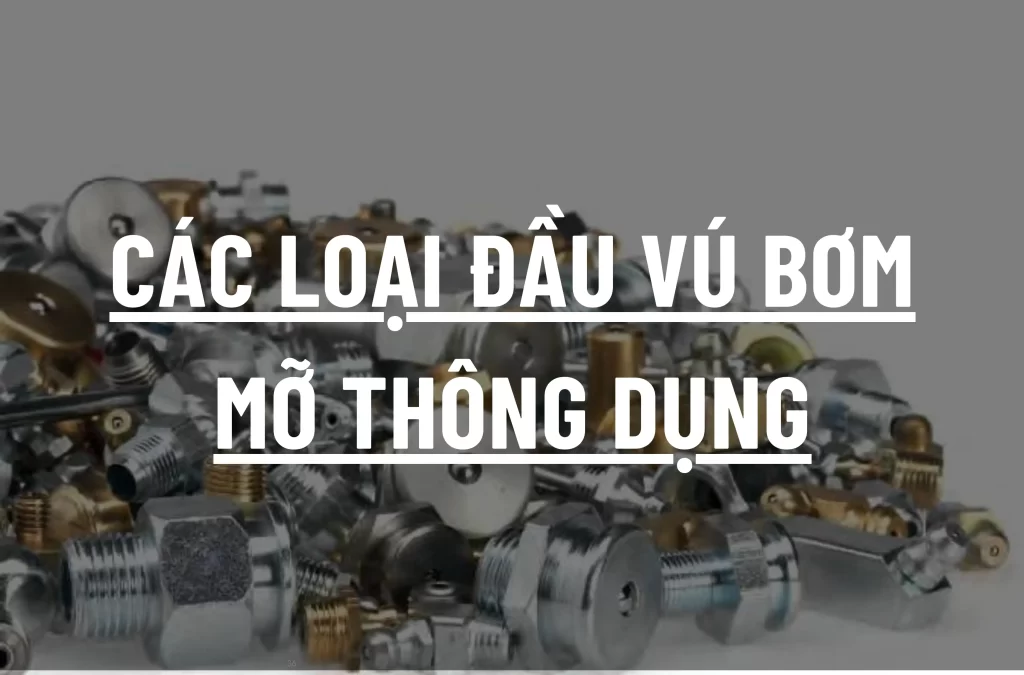1. What is a Level Sensor?
Cảm biến mức là thiết bị để xác định mức hoặc lượng chất lỏng. Chất lỏng hoặc chất khác chảy trong hệ thống mở hoặc đóng.


2. Level Sensors – Classification and Operating Principles
2.1. Classification of Level Sensors
To measure the level of liquids and solids, there are various measurement methods available. Among them, there are two main types: non-contact level measurement and contact level measurement.
- Đo mức tiếp xúc: Đo mức tiếp xúc là một phương pháp đo mà cảm biến sẽ báo mức khi tiếp xúc với nước hay các chất lỏng, chất rắn cần đo.


- Đo mức không tiếp xúc: Công nghệ đo không tiếp xúc phát triển để giải quyết các vấn đề khó khăn khi lắp đặt do: không gian lắp đặt hạng hẹp, vị trí lắp đặt không phù hợp, môi chất không cho phép thiết bị đo tiếp xúc với thiết bị đo. Trong một số trường hợp các điều kiện không cho phép lắp trực tiếp thì bắt buộc phải lắp từ trên xuống và không cho tiếp xúc với chất lỏng.


2.2. Some level measurement methods – operating principles
- Cảm biến đo mức dạng phao: Một phao có nam châm tích hợp di chuyển lên xuống theo mức chất lỏng và công tắc sậy tích hợp trong thân chính được bật và tắt bằng lực từ.


- Cảm biến đo mức chất lỏng dạng điện dung: Nguyên lí cảm biến đo mức bằng điện dung hoạt động dựa trên sự khác biệt hằng số điện môi chất lưu với không khí. Điều kiện, điện môi của lưu chất phải lớn hơn hằng số điện môi của không khí. Theo đó, hằng số của điện môi không khí rơi vào khoảng 1.0, hằng số điện môi dầu 1.85 đến 5, còn nước có điện môi lớn từ 50 đến 80. Khi các chấy lưu thay đổi kéo theo sự thay đổi của hằng số điện dung môi tương ứng.


- Cảm biến siêu âm đo mức nước: Đo mức dạng siêu âm sử dụng công nghệ phát sóng từ cảm biến tới chất lỏng cần đo, sóng âm này sẽ bị phản hồi lại khi gặp mặt nước. Cảm biến siêu âm vừa phát sóng ra đồng thời cũng nhận sóng phản hồi lại, dựa vào sự thay đổi tần số mà cảm biến đo được khoảng cách từ cảm biến tới mặt nước. Cảm biến siêu âm phù hợp với các ứng dụng đo mức nước yêu cầu không được tiếp xúc với chất lỏng. Tín hiệu ngõ ra tuyến tính dạng analog 4-20mA hoặc 0-10V.


3. Level Sensors – Advantages, Disadvantages, and Applications
3.1. Advantages and disadvantages
3.1.1 Float Level Sensors:
- Advantages: Relatively low cost compared to other types of level sensors. Can be used for all types of liquids except for viscous and slurry-like substances. Simple installation and usage.
- Disadvantage: Outdated technology. Prone to damage after a short period of use due to the float being prone to getting stuck, leading to incorrect signal readings.
3.1.2 Capacitive Liquid Level Sensors:
- Advantages: Can be used in applications with high pressure and temperature. Low cost. Minimum liquid level measurement distance is 100mm. The sensor is suitable for harsh environments such as high temperature and pressure. Capable of measuring fuel, oil, integrated with explosion-proof features. Wide measurement range for solid materials such as cement, plastic pellets, etc.
- Disadvantage: Not suitable for tanks with agitators.
3.1.3 Ultrasonic Water Level Sensors:
- Advantages: High accuracy, suitable for water, chemicals, and food environments such as milk, alcohol, etc. Additionally, the sensor can be used to measure levels of various explosion-proof oils.
- Disadvantage: Not suitable for tanks with high temperature and pressure. Due to the principle of level measurement using ultrasonic waves. The waves can be affected by wave disturbances such as tanks with agitators or areas with rippling waves on the surface of a pond.
3.2. Applications:
- Liquid level measurement: Widely used in various industries such as food and beverage (beer, wine, soft drinks, milk, etc.), water supply and wastewater treatment plants, fuel monitoring (gasoline, diesel, etc.), …


- Solid level measurement: Used in industries such as food (flour, sugar, etc.), cement, animal feed, plastics, …


4. Level Sensors – Technical Specifications
To select a level sensor, you need to consider some basic parameters:
- The application of level measurement is what?
- Power Supply
- Operating Temperature
- Operating Environment
- Operating Pressure
5. Level Sensors – Some Considerations When Using
- Depending on the intended use, choose the appropriate type of level sensor.
- For each type of level sensor, there will be specific considerations to keep in mind.
Example: Guide on how to choose a liquid level sensor – water
- Determining continuous level measurement or point level detection – high/low level alarm
- It is necessary to know the type of liquid to be measured in order to select the appropriate device.
- For high/low level alarms, it’s important to choose the appropriate probe length because it cannot be adjusted.
- For continuous level measurement, it’s necessary to determine the type of level measurement and the distance to be measured.
- What is the temperature and pressure (if any)?
- The output signal for each type is 4-20mA or 0-10V for continuous level measurement.
- The cost of each type of sensor
6. Level Sensors – Manufacturers
- Matsushima, xuất xứ: Nhật Bản
- Siemens, origin: Germany
- Dinel, origin: Czech Republic
- Hawk, origin: United States
- UWT, origin: Germany
- …
Currently, Hung Viet is the distributor for Matsushima sensor products in Vietnam. For further details, please contact us using the following contact information:
Hung Viet Electronics and Trading Co., Ltd. (HVC)
Specializing in providing solutions, supplies, machinery, equipment, spare parts, raw materials serving industries such as chemical, cement, steel, glass, paper, textiles, food and beverage, construction, transportation, etc.
- Address: Số 5 ngách 6/13 Kim Đồng, Hoàng Mai, Hà Nội
- Phone: +84(0)4 3664 1708
- Fax: +84(0)4 3664 1709
- Hotline: +84 913214096
- Email: sale@hvc-vn.com
- Website:hvc-vn.com
- Working hours: Monday to Friday: 8:00 AM – 5:00 PM; Saturday: 8:00 AM – 12:00 PM




